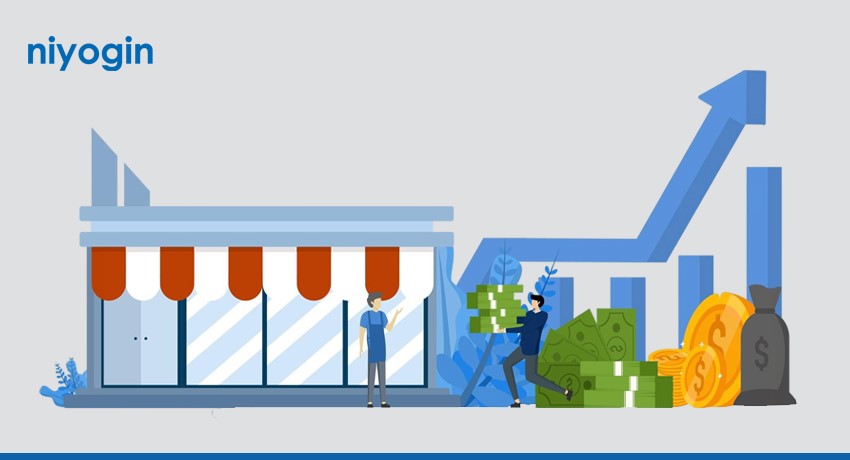Micro, small, and medium-sized enterprises are the foundation of the Indian economy and play a major role in enhancing our GDP, employment, and exports. Despite their crucial role, securing timely and sufficient financing is still a major obstacle for many MSMEs. The Indian MSME lending market was valued at about ₹35 trillion as of March 2024, but there is still a prominent credit gap of about ₹28 lakh crore, indicating the enormous unmet potential. MSMEs must be strategic and well-prepared when applying for business loans to close this gap and promote long-term growth. Tips that MSMEs can follow in navigating the lending landscape: – 1. A Good Grasp of Your Financial Needs and Goals As a business owner, you must determine the precise amount and purpose of the funding your business needs. A clear goal will help you choose the best loan product and avoid misallocating funds, whether for managing working capital, product launches, equipment upgrades, inventory expansion, or digital transformation. 2. Develop an Appealing Business Plan Your business plan serves as both your road map and a vital document for lenders. Along with your management team, operational strategies, market analysis, and business model, it should also include realistic financial projections. Lenders are looking for a well-constructed repayment plan and a clear path to profitability. Your professionalism and foresight are demonstrated in this plan, which boosts lender confidence. 3. Maintain a Strong CIBIL Score Your credit score, especially your CIBIL score, plays a pivotal role in loan approvals and terms. Lenders heavily rely on it to assess your creditworthiness and default risk. A strong CIBIL score (usually above 750) can lead to: 4. Prepare All Necessary Documents To streamline your loan application, gather essential documents beforehand, as requirements can vary by lender. Generally, all applicants will need identity proof (PAN, Aadhaar, passport, Voter ID, driver’s license) and address proof (Aadhaar, utility bills, ration card, passport, driver’s license). Business address proof typically includes Udyam Registration, lease agreements, GST registration, or business utility bills. Prepare 3-5 years of ITRs with profit & loss and balance sheets, 6-12 months of bank statements, and GST returns for income proof. Business registration proof may involve partnership deeds, MoA, AoA, sales deeds, and copies of licenses. New businesses or those seeking larger term loans should also have projected financials (balance sheets for the next two years) ready. 6. Assess Loan Options and Terms It is important to compare the interest rates of various banks and NBFCs, repayment terms, processing fees, hidden charges, and disbursement speeds. Certain lenders provide MSMEs with customized products that have adjustable payback schedules. A careful comparison can result in substantial cost savings and a better financial option for your company. 7. Plan Your Repayment Strategy Present an understandable and practical repayment schedule. Lenders want to be sure you can afford to repay the loan. Select a repayment period that corresponds with the financial cycles of your company after taking your cash flow projections into account. Avoid missing EMI payments at all costs, as this will negatively affect your credit score and future borrowing capacity. 8. Proactively Address Common Challenges Many MSMEs face hurdles like limited collateral, which government schemes such as CGTMSE help overcome by offering collateral-free loans. To combat limited financial knowledge, it’s wise to consult financial advisors or bank officials. Building lender trust is crucial and can be achieved through maintaining formal financial records, a strong credit history, and a robust business plan, while fintech solutions are also using AI to better assess risk. Furthermore, investing in digital tools addresses outdated technology, improving operations and lender perception, and adherence to strict regulatory compliance is vital for long-term viability and instilling confidence in lenders. 9. Seek Expert Advice Don’t hesitate to consult with financial advisors, chartered accountants, or bank officials. Their expertise can provide clarity on eligibility criteria, suitable loan products, and documentation requirements, guiding you toward the most beneficial funding options. By strategically preparing and understanding the nuances of financial products, MSMEs can confidently navigate the lending landscape. This proactive approach will not only secure vital funding but also pave the way for sustainable growth, transforming challenges into opportunities for a brighter future.
Month: June 2025
Digital Literacy for Businesses: Its Role in Financial Inclusion and Growth
Since small businesses are frequently at a severe disadvantage in the business environment that favors large corporations, digital literacy is becoming extremely important for entrepreneurs in today’s rapidly evolving digital era. The global manufacturing economy depends heavily on MSMEs, which create jobs and generate significant profits. The continuous closure of these businesses results from several challenges that MSMEs face, including a large productivity gap, a significant lack of financing and most importantly, a lack of digital literacy, resulting in inadequate workflows of the organization. A Mastercard report states that while three-quarters of SME businesses incorporate digital tools into their daily operations, achieving a seamless digital experience is still difficult. According to the same study, 25% of these business owners are overburdened with managing about six platforms daily, which costs them money besides time and energy. Digital Literacy in MSMEs Even though 85% of MSMEs acknowledge the importance of technology in the current environment, more than half claim that they are not entirely digital, with many still using paper-based procedures. According to the respondents, productivity has decreased by two to four hours per day as a result of these poor technology practices. In addition to being extremely expensive, this makes it even more difficult for businesses to remain open when their operational components are failing. Importance of Digital Literacy for MSMEs When small businesses become digitally savvy, they utilize the internet to go beyond their local neighborhoods. Whether it’s through e-commerce sites, social media, or online marketplaces, MSMEs can connect with customers they’d never reach otherwise — even across borders. This means more visibility, more opportunities to market their products, and a better chance to stand toe-to-toe with bigger competitors. Understanding and using digital tools can make a world of difference in how a business runs day to day. With things like cloud-based accounting, project management apps, online inventory tracking, and easy communication platforms, routine tasks become faster and less error-prone. This results in spending less time on paperwork and getting more time to focus on growing the business. Digital literacy also opens the door to smarter decision-making. By knowing how to read website stats, track sales trends, or listen to online customer feedback, MSMEs can get a clearer picture of what’s working and what’s not. That insight helps them tweak their strategies, create products people want, and spot new opportunities before others do. Going digital doesn’t just make things easier, it can also help businesses save money. Instead of spending on printing, postage, or travel, MSMEs can promote their brand online, hold virtual meetings, and store records digitally. Over time, these small savings add up. Plus, digital tools help cut down on mistakes and waste, which means even more money stays in the business.

